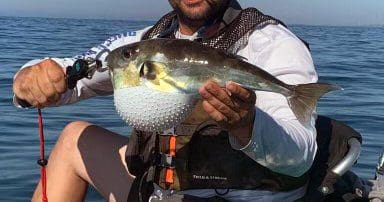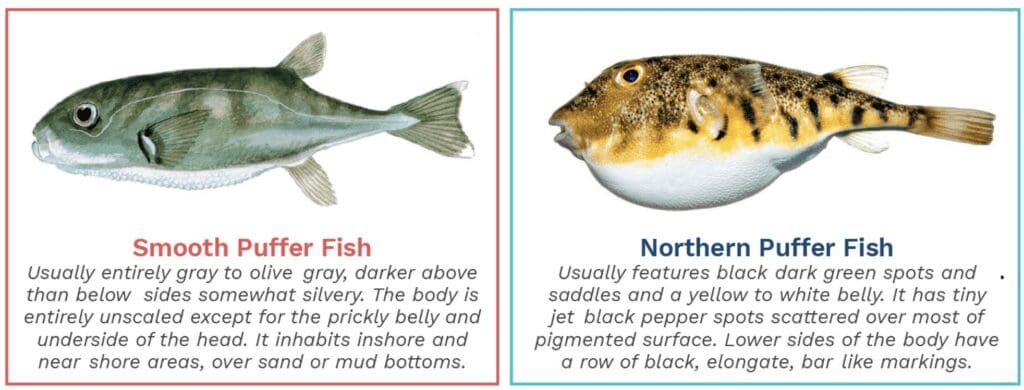Search Posts
Recent Posts
- Real Estate in RI: Seaside waterfront communities are all the rage. Who’s buying – Emilio DiSpirito June 6, 2025
- Outdoors in RI: 2A votes, Charter Yachts, active summer programs, garden tours, aquatic weeds… June 6, 2025
- All About Home Care, with two Rhode Island locations, closing after 22 years in business June 6, 2025
- GriefSPEAK: Angel wings with footprints – Mari Nardolillo Dias June 6, 2025
- Rhode Island Weather for June 6, 2025 – Jack Donnelly June 6, 2025
Categories
Subscribe!
Thanks for subscribing! Please check your email for further instructions.

Know your Puffers!
Know Your Puffers! DEM, RI Saltwater Anglers Association Warn of Toxins from Catching Smooth Puffer Fish
The Department of Environmental Management (DEM) Division of Marine Fisheries and the Rhode Island Saltwater Anglers Association are warning of receiving increased reports of anglers catching Smooth Puffers Fish in Rhode Island waters. Puffers belong to the family Tetradontidae, which is comprised of around 120 known species. Smooth Puffers have a fairly significant range in the western Atlantic Ocean from New England and Bermuda to Argentina, though it’s more common in southern waters.
This member of the puffer family is a serious threat to your health if not cleaned properly. The neurotoxins in puffers responsible for illness and death are Tetrodotoxin and Saxitoxin, which adversely affect the human central nervous system. According to the US Food and Drug Administration (FDA), these toxins are deadlier than cyanide and there are no known antidotes for these toxins. Also, these toxins cannot be frozen or cooked out. Toxins can be found in all organs of the Smooth Puffer, intestines, and even in the skin. Do not use Smooth Puffers for bait or chum. If you catch a Smooth Puffer, take this fish off the hook carefully and release it.

Usually entirely gray to olive-gray, Smooth Puffer Fish are darker above than below; sides somewhat silvery. The body is entirely unscaled except for the prickly belly and underside of the head. It inhabits inshore and near-shore areas, over sand or mud bottoms.
The usually features black/dark green spots and saddles and a yellow to white belly. It has tiny jet-black pepper spots scattered over most of pigmented surface. Lower sides of the body have a row of black, elongate, bar-like markings. The Northern Puffer (Sphoeroides maculatus) is a club-shaped fish that puffs up into a ball in self-defense. It is commonly found in Rhode Island waters.
Unlike many other pufferfish species, the flesh of the northern puffer is not poisonous, however, some scientists believe there are low-level toxins in the skin and organs. Anglers are advised to thoroughly clean the Northern puffer of all skin and viscera before eating.
For more information about recreational saltwater fishing, please visit dem.ri.gov/marine. For more information on DEM programs and initiatives, visit www.dem.ri.gov. Follow DEM on Facebook, Twitter (@RhodeIslandDEM), or Instagram (@rhodeisland.dem) for timely updates.
